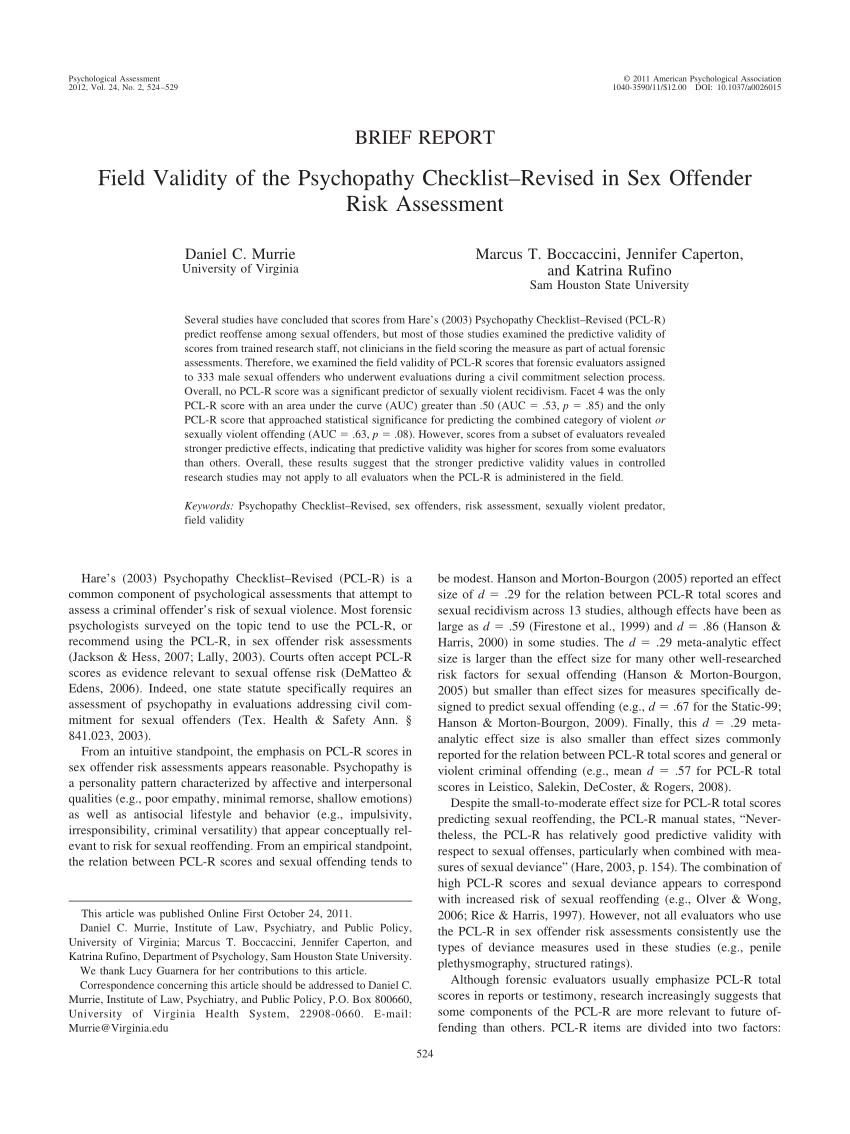
“The inner voice that says ‘I should not do this’ is not there.” “These are people with a stunning lack of conscience,” Hare said. This can include everything from emptying pensioners’ bank accounts to running bogus charities-even to faking medical credentials and walking into hospital operating rooms to perform surgery on unsuspecting patients.Ī 1992 study by UBC psychologist Don Dutton also revealed that 30 percent of all wife batterers in volunteer and court-mandated treatment programs were, according to the Hare checklist, classifiable as psychopaths. But as Hare pointed out in his 1993 book, Without Conscience: The Disturbing World of the Psychopaths Among Us, there are also thousands of other, nonmurderous psychopaths who regularly engage in ruinous behaviour.
#HARE PSYCHOPATHY SERIAL#
The worst examples include serial killers like Clifford Olsen, Ted Bundy, and Jeffrey Dahmer. Psychopaths often come across as charming and charismatic, but peel back the smile and you’ll find a ruthless, domineering, manipulative social predator who spreads havoc wherever he or she goes. He has written and edited three books and published more than 70 papers on the personality disorder known as psychopathy.Īlong with former research assistant Janice Frazelle, he has created an extremely effective test that is being applied around the world to identify which inmates are psychopaths-remorseless people who lie, cheat, steal, and even murder to get their way-and which ones are not. Hare’s single-minded obsession to unlock the mysteries of psychopathic behaviour has produced an immense body of research. Charming and charismatic social predators He has said that if it weren’t for the cooperation of prison officials in the Fraser Valley and many of the inmates themselves, he would have given up long ago. Often he didn’t receive much help from senior correctional officials back in Ottawa or from agencies that fund scientific research. It wasn’t always easy to persuade murderers, rapists, and other hardened criminals to consent to undergoing a battery of psychological assessments.Īlong the way, Hare also faced opposition from criminologists and sociologists who felt uncomfortable with the idea of investigating individual differences between criminals. For most of the early years, Hare did his detective work in the prisons, interviewing scores of inmates and meticulously noting the differences between offenders who genuinely seemed to lack a conscience and those who turned to crime because they had poor role models or were merely troubled, desperate, or too lazy to work. Since then, Hare has been on a 30-year odyssey to try to determine why people like Ray can have such callous disregard for the people they come in contact with. But even he sounded a little shaken as he recalled how Ray’s easygoing charm masked his particularly brutal nature. Hare, a stocky man with a deliberate manner, doesn’t seem the type to scare easily. “Ray was a tall, slim fellow with burning eyes. To this day, Hare is convinced that the man retaliated by sabotaging his car. Hare had previously refused to get Ray a job as a roofing contractor with his father’s firm, which would have helped the inmate at an upcoming parole hearing. Only after the car was inspected did he learn that the brake line had been cut so a slow leak would occur.Įarlier, Hare’s car had been repaired in the prison auto shop, where a psychopathic patient, whom he calls “Ray”, was putting in time. He was barely able to keep the car under control before he made it to a service station. To Hare’s dismay, the brakes gradually become spongy before finally failing altogether while he was driving down a long hill.

Hare was at the wheel of a 10-year-old Morris Minor, which he had just obtained in an exchange of vehicles with warden John Moloney. He was driving along the Hope-Princeton Highway, just past the town of Hope, on his way to the University of Western Ontario to study for his PhD. It was a cold, windy day in early September 1960, and he had just quit his job as a prison psychologist at the old B.C. UBC psychology professor Bob Hare will never forget the time he was almost killed by a psychopath.


 0 kommentar(er)
0 kommentar(er)
